In the past, automotive design has been “purely functional” and aesthetic, with the role of colour, material and finishes (CMF) designers being to provide “beautiful interior materials”, says Toyota Motor Corporations colour and sensory designer Viviana Hohenstein.
Now, as the possibility of fully autonomous driving looms in the near future, Hohenstein says “the car has become a new kind of space and people expect much more”. With this in mind, Toyota – Lexus’ parent company – adapted the CMF role 18 months ago, changing the title to colour and sensory design while building a team with the capabilities to design these new and interactive experiences.
Setting the standard in this new era of automotive is the LF-ZC (Future Zero-emission Catalyst) concept car – a vehicle that is part of Lexus’ commitment to becoming an all battery-electric brand in Europe by 2030 and globally by 2035. Aside from the new modular vehicle structure, cutting-edge technologies including a new vehicle software platform, perhaps the most interesting think about this concept car is the incorporation of tailored mood lighting and scents along with its use of bamboo as a primary interior material.
“Transformed by the light”

The LF-ZC has three sensory modes: a sport/focus mode, a calming autonomous driving mode, and an awakening mode. The sport/focus mode features darker colours and directions of light that indicate speed and encourage focus on the road, with an accompanying smell also chosen to induce focus, while the autonomous driving mode includes “softer” hues of lighting and calming motion principles paired with a “foresty” natural scent, chosen to boost relaxation, Hohenstein explains.
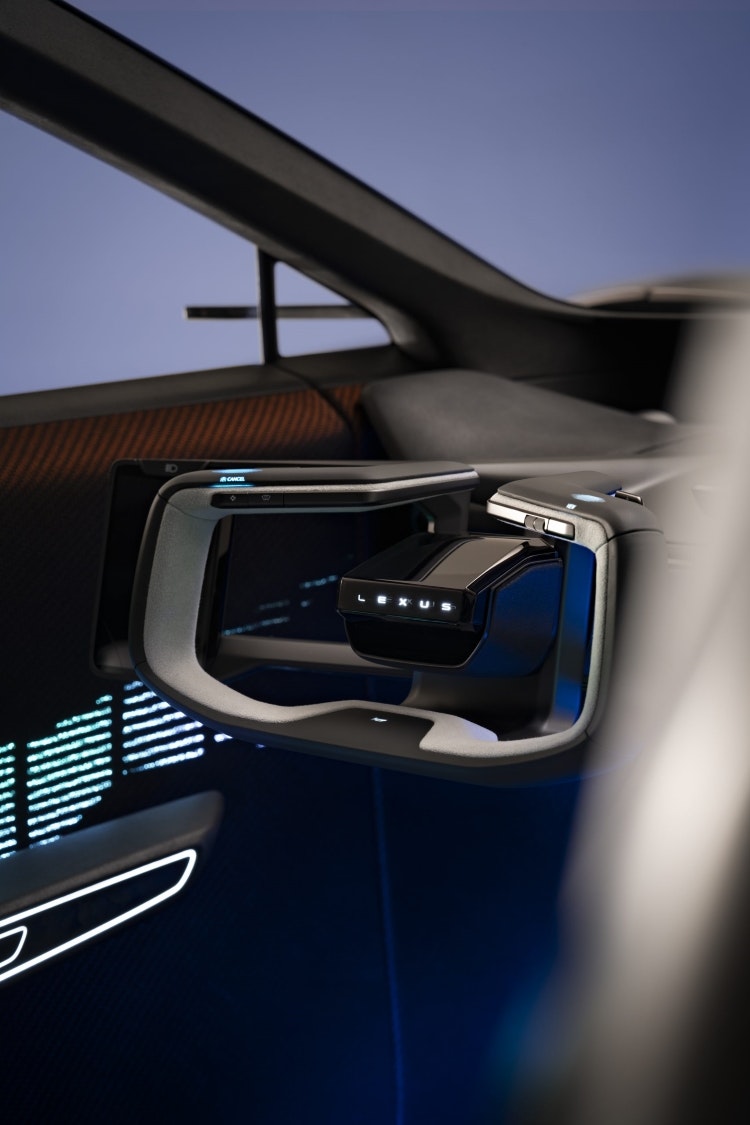
The awakening mode seeks to make the driver feel “refreshed” with citrus scents and brighter, more colourful lights. Lighting has been integrated in different ways, sometimes appearing behind the material of the door panels, with more light patterns being projected onto surfaces from the corner of the dash panel.
Hohenstein notes how Lexus opted for a dark material palette in the car’s interiors, complimented by materials that are “transformed by the light”. For example, the door panels comprise a reflective copper underlay clad in a dark, knitted bamboo textile.
“A super, high-performance material”
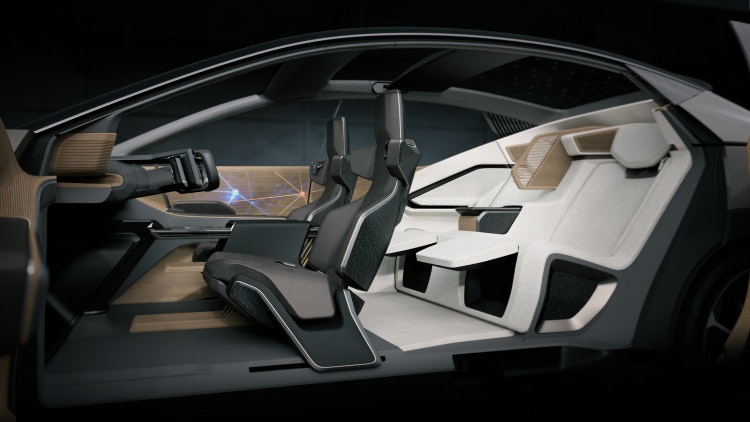
Bamboo appears in a number of forms in the LF-ZC concept car. Its seats are clad in a textile made of bamboo fibres, while the more solid armrest “looks like plastic” but is also made from bamboo, using traditional Japanese craft techniques, according to Hohenstein. The floors of the LF-ZC are a combination of cardboard and bamboo.
Hohenstein describes bamboo as “very strong and very lightweight”, adding that, when combined with carbon, it makes for “a super, high-performance material” with the added benefit of incorporating sustainable and traditional making techniques.

Japan has “a long history of using bamboo”: before plastic took over, it was used for everything from packaging and furniture to building, according to Hohenstein. Lexus had the idea to reintroduce it across the whole LF-ZC car, “without people knowing it’s bamboo”, championing “local craftmanship” in its design process, she adds.
Bamboo is an extremely fast-growing invasive species in her home country, Japan: Hohenstein tells us it destroys “the natural infrastructure of trees”. However, its abundance and durability are clearly benefits when it comes to using bamboo in car designs.
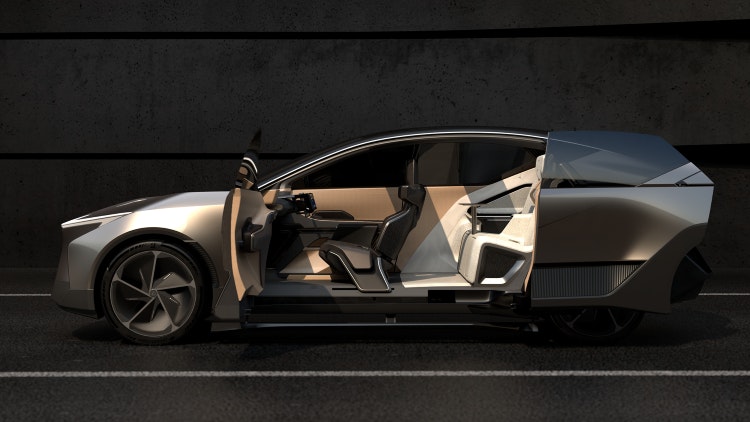
If bamboo to become a mainstream material in car design, it could solve two problems at once: removing it from environments where it causes harm, and putting it to good use in a more sustainable setting. Another argument for using bamboo is its carbon-sequestering qualities.
A one-hectare bamboo forest can potentially absorb over 60 tonnes of CO2 per year, which is 30 times more than other plants. Its lightness also significantly reduces CO2 emissions during transport.
The LF-ZC project was all about “trying out bamboo”, and everything that works well will be taken over to production – something that’s always challenging due to the various safety regulations and specifications, according to Hohenstein, who says she’s “very happy with the results of the concept car”. She adds that bamboo is “not that difficult to work with”; but that it’s difficult to meet the same regulations as plastic with the material.
“We always think of end of life”
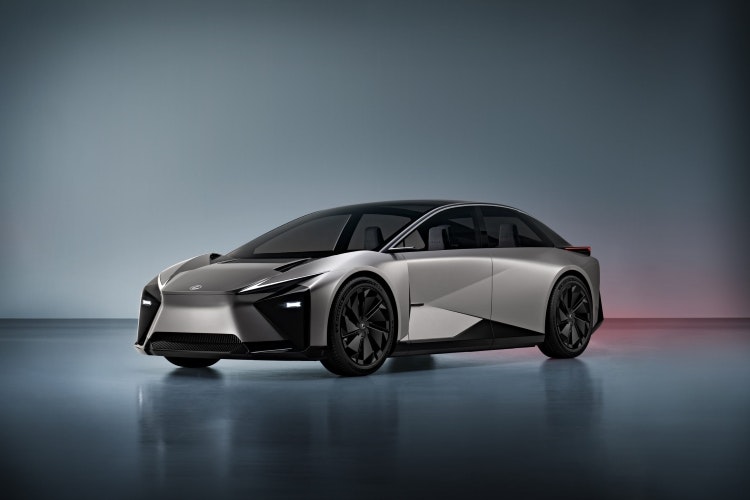
Every car that goes on the market from Toyota or Lexus has to go through Toyota’s specification process, which Hohenstein describes as “one of the hardest criteria in the car industry”, resulting in highly durable cars. Ultimately, this means the bar is set very high for the colours and sensory department.
When thinking about recyclability, Hohenstein says “it depends very much on where you recycle the car”, as Europe has “highly developed recycling facilities” compared to Asia, which has very few, and America, which is “around 90% landfills”.
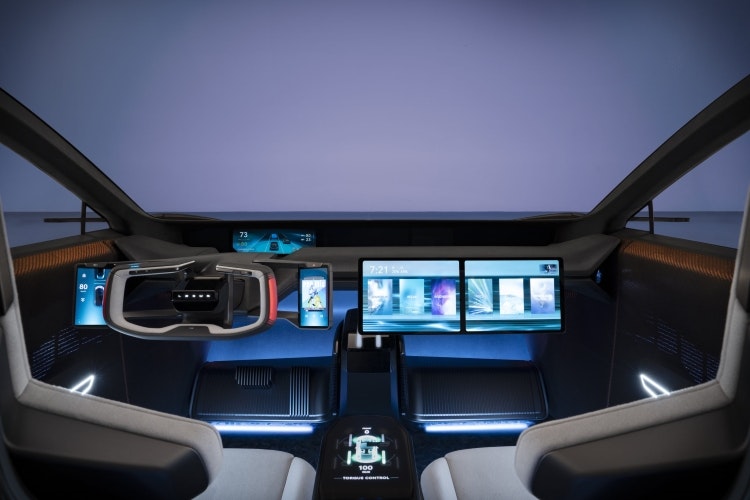
“When we develop new materials, we always think of end of life”, says Hohenstein, explaining how this often involves pre-empting what recycling facilities might look like in decades to come. She reveals that bamboo combined with plastic is quite easily recyclable and notes how materials made of 100% bamboo are biodegradable.
The LF-ZC show car was designed in just six months and it is expected to hit the market in 2026 as Lexus’s most sustainable car to date.
With cars becoming more and more technologically advanced, Hohenstein feels that natural materials can help “make you feel comfortable in the car”. She believes that, while “the tech has to be there”, it should be “kind of invisible” and integrated into the natural materials, justas the lights are in the LF-ZC.
8 Minutes and 20 Seconds
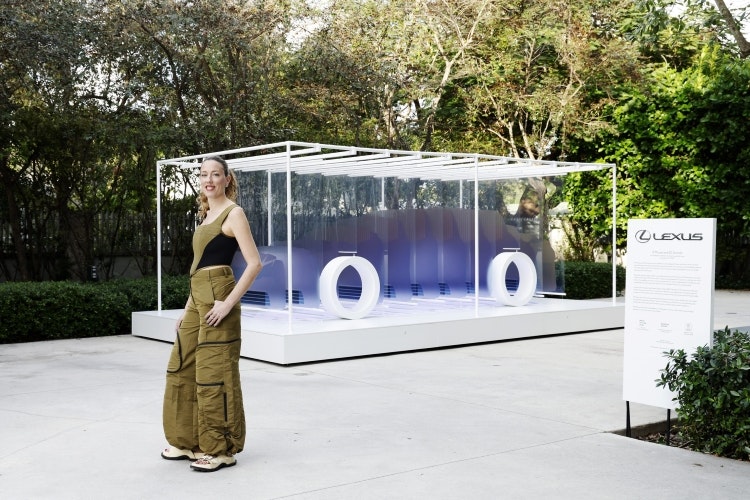
Dutch solar designer Marjan van Aubel was commissioned to design an interactive installation that represents the LF-ZC concept car. She was introduced to Lexus through its design awards last year, as she worked with the company to guide winners through the process of manufacturing products and technical development.
Its name – 8 Minutes and 20 Seconds – references the time it takes sunlight to reach the earth. van Aubel remembers the brief being very open, only specifying that the installation should be interactive and representative of the sensory experience of the LF-ZC.
She collaborated with Amsterdam-based spatial designers at Random Studio on the project, who specialise in experience design and were able to help her refine how people would interact with the installation.
It comprises 15 printed solar panel sheets with “slices” of the car’s intersections, resulting in a 3D model of the LF-ZC. The panels are made of Organic Photovoltaics (OPV), which are third-generation solar cells that are both transparent and rich with colour.
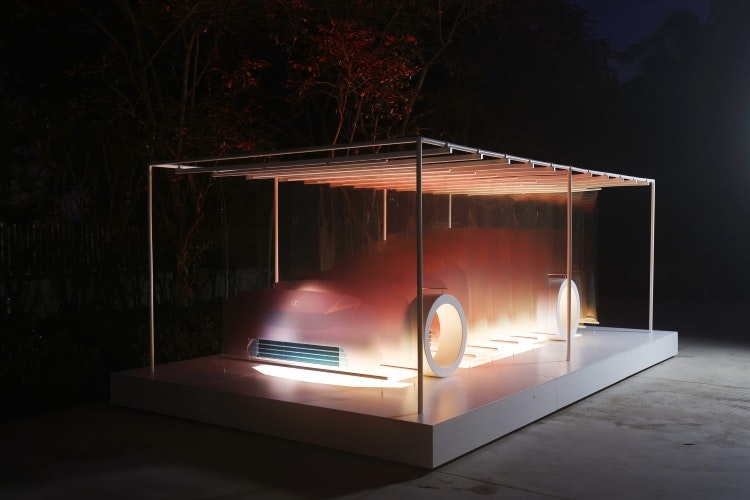
As you approach the installation, four motion sensors pick up your presence. van Aubel tried to incorporate the “extra layers of the driving experience” that Lexus have considered in the LF-ZC, and so it responds with light and sound when approached.
The direction of light mirrors the dynamics of the car in motion and the tones of light changes throughout the day, with warm, sunrise hues early on and cooler tones during the evening. A bespoke ambient melody accompanies the installation, featuring warm string instruments, soft piano and chimes, intermittently embellished with birdsong and other sound effects. Woody bamboo notes can also be heard in the composition, nodding to the natural material used in the original LF-ZC’s interior.
Throughout the day, the sculpture harnesses solar power, drawing energy from the OPV cells, which accumulate energy in batteries set within the sculpture’s base. This continuous absorption generates a reservoir of power to help sustain the sculpture’s displays and features.
van Aubel hopes to change the attitude towards solar through her work, demonstrating how it can be “more integrated and intertwined into our daily environments”. In future, she wants to explore “how can solar be integrated more seamlessly” in automotive design, without interrupting the aesthetic of the car.

- Design disciplines in this article
- Industries in this article







